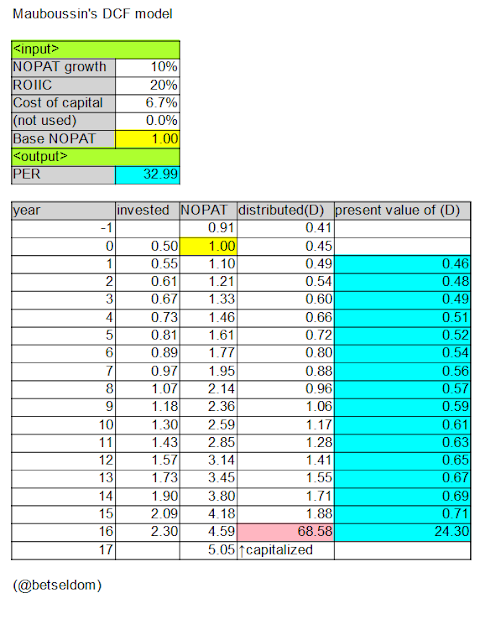なお、本文書では割安な例のひとつとしてMSCI Emerging Value Indexをあげています。MSCIのWebサイトで同指数の構成銘柄および比率を確認すると、最大銘柄がサムスン電子で2.85%、第2位がインドのリライアンスで2.71%、第3位が中国建設銀行で2.27%でした(2020年10月30日付資料)。たしかに代表的な人気銘柄には集中しておらず、相対的に割安な比較的大型の銘柄に分散されているようです。
TONIGHT, WE LEAVE THE PARTY LIKE IT’S 1999 (GMO)
1999年当時と同様に、現在のグロース志向投資はバリュー志向の成績を圧倒
1990年代の終盤に、バリュー志向の運用者は守りに入っていました。彼らの掲げるバリュー志向は、5年以上も前から不人気でした。バリュー型運用で名高いファンドは顧客が流出し続け、次第に閉設されていきました。彼らの顧客は「長期的にみればバリュー志向が勝つ」との信念に従っていたものの、ラッセル1000バリュー指数の成績をその親類たるグロース指数と比較すると、1999年に先立つ11年間のうちの7年間で大幅に負けていたのです。数知れぬほどの学術論文が「バリューの死」を謳いました。もちろん最終的には平均回帰の力がはたらき、バリュー志向は7年連続でグロース志向に大差をつけることとなります。初期の苦しみを辛抱できた投資家は、最終的には報われました。バリュー志向は1999年から2006年の間に、グロース志向に対して都合99%の差をつけました。
(中略)
今日に目を転じても、当時と同じリズムが刻まれています。有名で定評あるバリュー型ファンドは店仕舞いをつづけています。バリュー投資家はなおも苦しみ続け、成績はますます離されるばかりです。バリュー志向の成績がグロース志向に劣った年はこの11年間で8回になり、年率でみた負け幅も悪化しています。図3には直近5年間の状況を記しています。今日と1999年当時が奇妙なまでに一致している様子が示されています。
(中略)
これでもまだ痛みが足りないでしょうか。それでは2020年の3月23日に始まって夏のあいだを通して継続した、Covid-19によるグロース志向の急上昇をみてみましょう。3月23日から8月31日までの113日間におけるグロース志向の上昇幅は77%に達し、32%の成績差をつけてバリュー志向を打ち砕きました(これは標準偏差4.5になるできごとで、403年間に一度しか発生しない計算になります。図4を参照のこと)。ここで重要なのは、グロース志向のあげた好成績がファンダメンタルズによって正当化できない点です。今回の例はわたしたちがこれまで観察してきたなかで、価値評価の乖離幅が最も広くなったひとつとなりました。それゆえに当社は「今こそバリュー志向を受け容れる時機であり、敬遠する時機ではない」と確信しています。1999年以降の時期と同様に、「最終的に平均回帰が生じたときには、正しい側にいたい」と投資家は考えることでしょう。
Growth Trouncing Value Today…Just Like 1999
In the late 1990s, Value managers were on the defensive. The Value style had been out of favor for more than half a decade. Well-known Value firms were losing clients and going out of business. Clients had been led to believe that “in the long run, Value wins.”Yet by 1999, the Russell 1000 Value Index had underperformed its growth cousin in 7 of the preceding 11 years, and by huge margins. Countless academic papers were proclaiming the “Death of Value.” Ultimately, of course, mean reversion worked, and Value went on to trounce Growth seven years in a row; despite the early pain, patient investors were ultimately rewarded for their perseverance. From 1999 to 2006, Value beat Growth by a cumulative 99%.
(snip)
Fast forward to today and the same rhymes are echoing. Well-known and established Value shops are calling it quits. The pain for Value investors has lasted even longer and performance spreads are even worse: Value has lost to Growth in 8 of the last 11 calendar years and by even wider margins. Exhibit 3 focuses on the last 5 years, drawing eerie parallels between today and 1999.
(snip)
Not painful enough? Enter the Covid-19 Growth rally of 2020, which started on March 23 and continued all summer. From March 23 to August 31 - a 113-day run - Growth was up 77%, beating Value by a soul-crushing 32% cumulatively (a 4.5 sigma event, which officially happens once every 403 years; see Exhibit 4). This outperformance of Growth, importantly, has not been justified by the fundamentals, resulting in one of the widest valuation spreads we’ve ever witnessed. We believe this is a time for leaning into Value, not away from it. When mean reversion ultimately occurs, just as it did in the post-1999 period, investors will want to be on the right side of that trade.
備考です。標題は、最近読んでいる本『菜根譚』の前集118から採りました。現代語訳は、「総て物事が衰えるきざしというものは、いきおいの盛大な時に動き始めている」になります(講談社、久須本文雄訳より)。なお同書の文章は、機会があればあらためてご紹介したいと思います。









